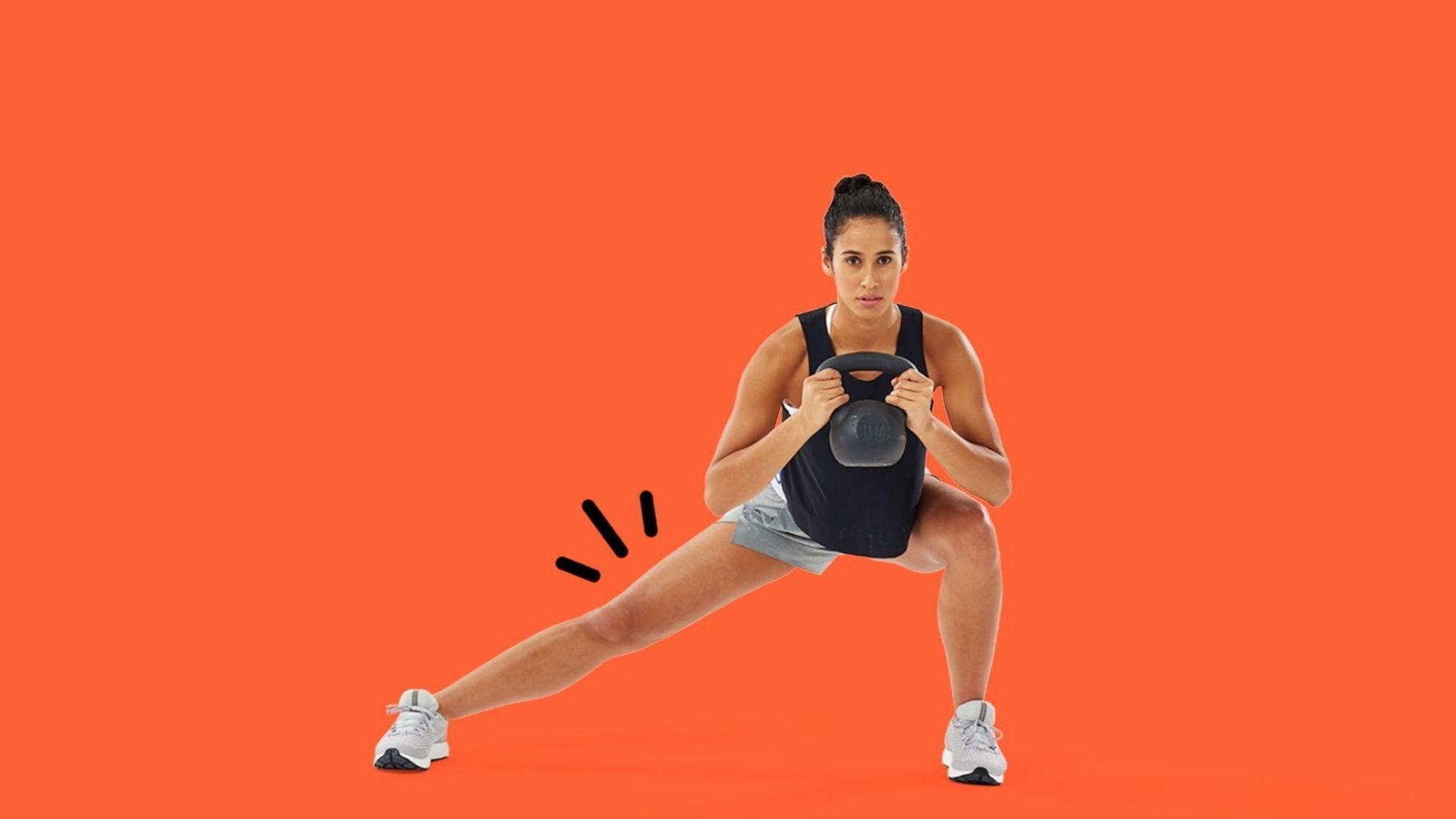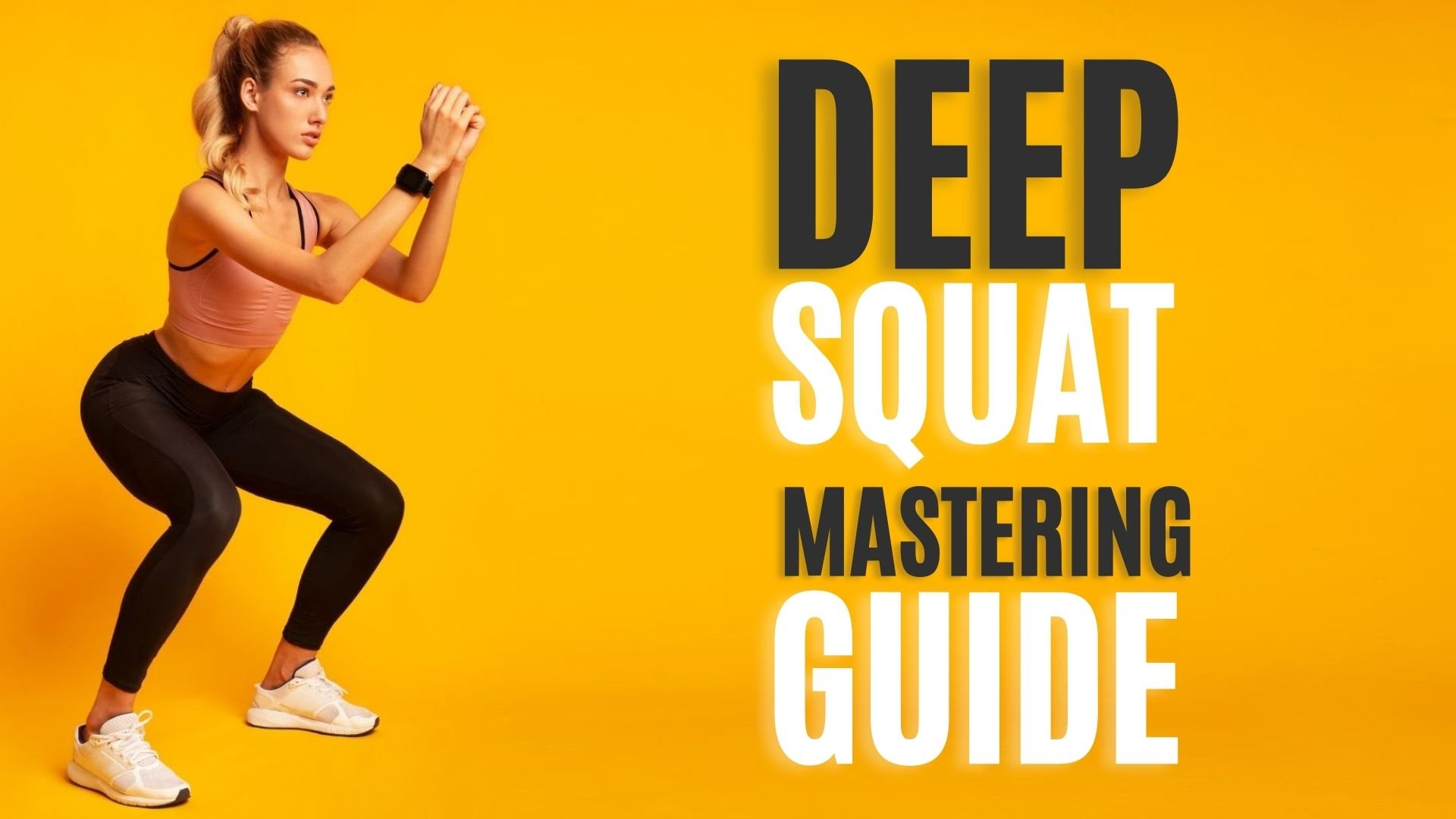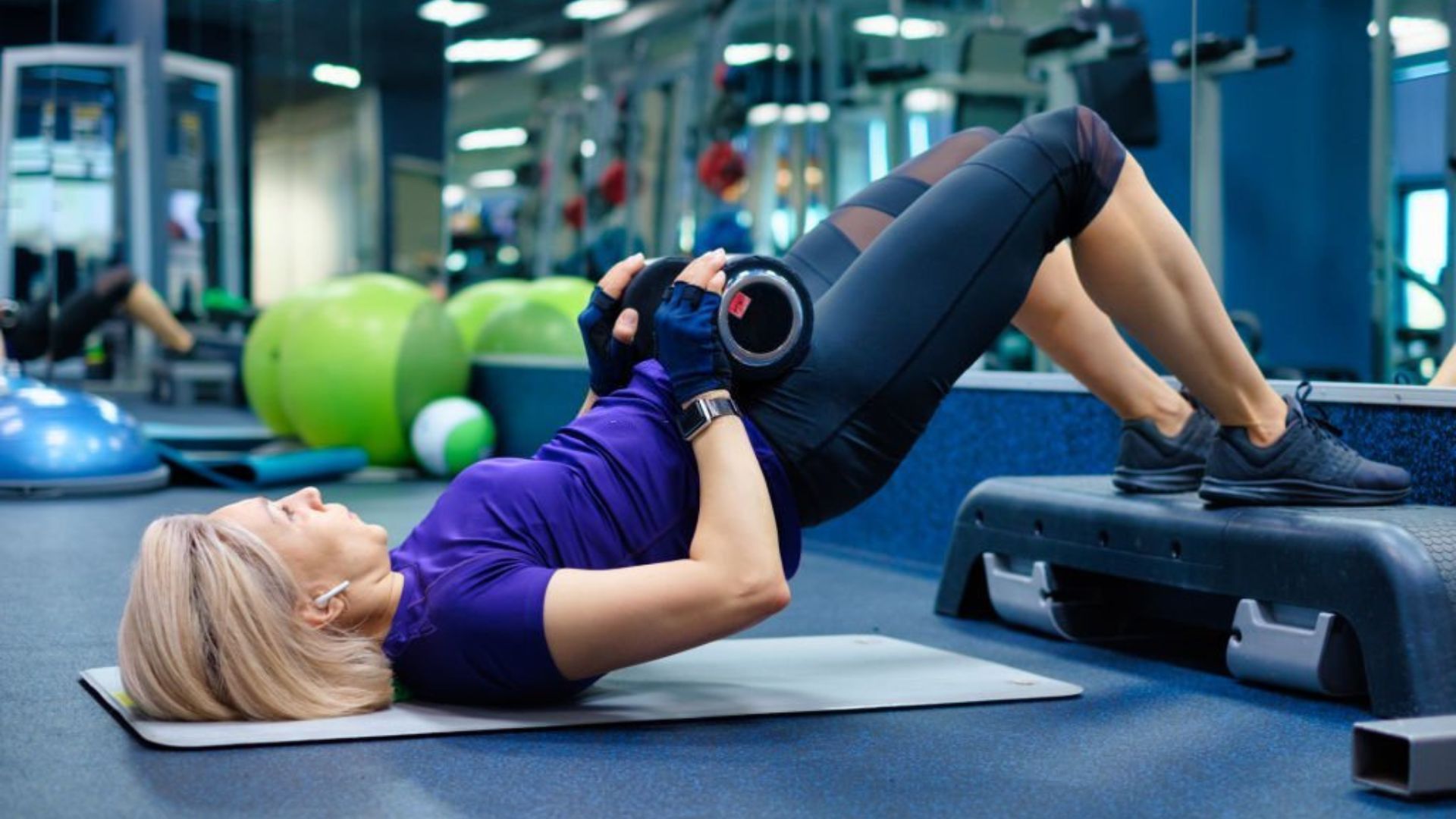
Dumbbell Hip Thrust: Benefits and How to Do It Correctly
Dumbbell hip thrust is among the most essential exercises to developing an effective posterior chain.
This exercise will not only strengthen your glutes and hamstrings as well, but it can assist you in developing proper posture for other exercises too particularly that barbell hip thrust.
If you spend the time to train dumbbell hip thrust you’ll soon see the positive results!
What Is Dumbbell Hip Thrust?
Dumbbell hip thrust, also known as the dumbbell hip thruster, are a lower-body workout that specifically engages the gluteal muscles, which include the gluteus Maximus and gluteus medius, as well as gluteus minimus.
When done correctly the hip thrust can target specific muscle groups that are located in your legs and lower back including the hamstrings quadriceps and adductors.
The most popular version of the exercise is a barbell hip thrust. However, other variations utilize different weights, such as dumbbells or kettlebells.
Dumbbell Hip Thrust: Working Muscles
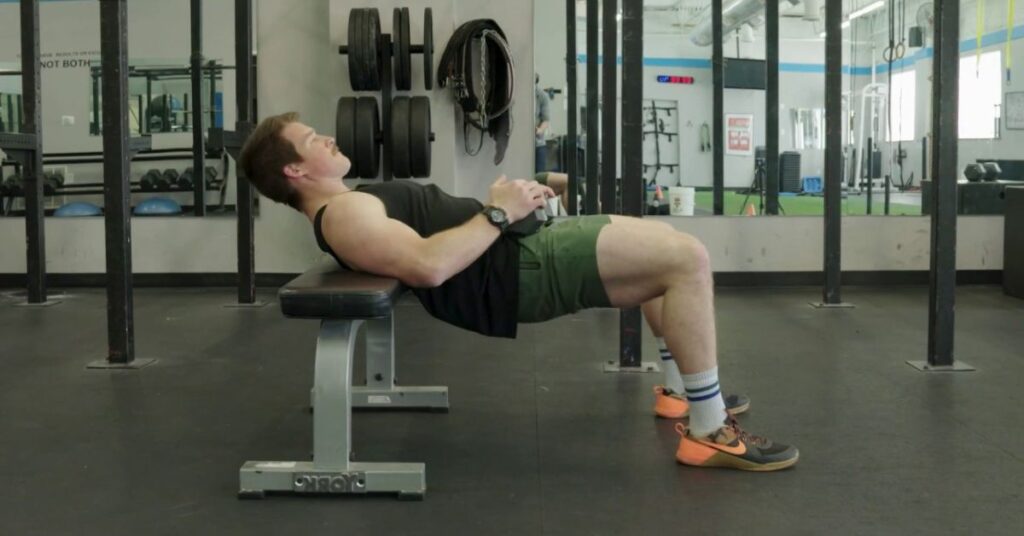
Primary Muscle Groups
Dumbbell hip thrust concentrates on strengthening your hamstrings glutes, and adductors.
It is not surprising that the dumbbell hip thrust targets the glutes the best. The gluteal muscles form composed of three muscles that include the gluteus maximus, the middle as well as the minimalist. Dumbbell hip thrust targets all the muscles however, it places the most weight on the gluteus maximus.
In addition, this exercise strengthens the hamstrings, which are comprised of three muscles located at the rear of your leg, namely the semitendinosus semimembranosus, and the biceps femoris.
Last, but not least, the hip thrust is a great exercise for the adductors, which are the muscles of the inner groin that are used isometrically to stabilize the pelvis while extending the hip. It is a stabilizer muscle that aids in maintaining balance and, when strengthened, can prevent injuries.
Secondary Muscle Groups
Dumbbell hip thrust also stimulates other muscle groups, which include your core muscles as well as lower back muscles. Your core muscles are also engaged when you do compound exercises, helping to maintain your balance and allowing you to lift safely.
It also helps your lower back muscles as your hip hinge is a key component that will help support your spine and increase flexibility.
Dumbbell Hip Thrust: Benefits
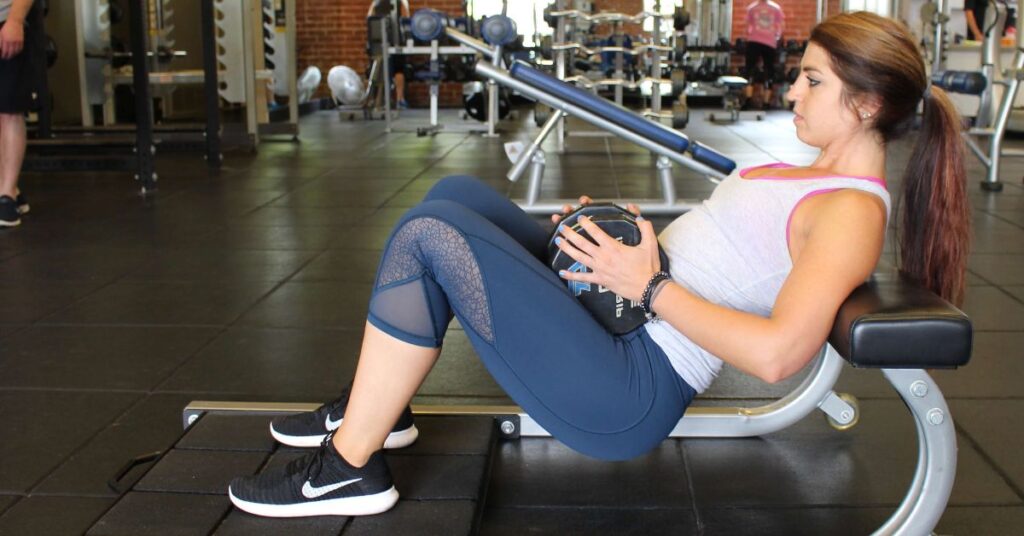
Dumbbell hip thrust increase strength and bulk in your glutes, in a way most other exercises can’t do, and experts believe that they can be beneficial for a variety of individuals including athletes and people over 65.
Glute strength is essential for stabilizing the pelvis, your core, as well as your lower back. If you’re not strong enough, you’ll be more prone to lower back pain, knee pain, as well as other kinds of injuries.
They also help improve athletic capabilities, like sprinting, jumping, and changing direction. Overall, strong glutes are the key to excellent mobility. A bonus? A well-rounded and lifted backside.
Enhances Athletic Performance
Utilizing the dumbbell hip thrust or variations will help improve your athletic ability. No matter if you’re an athlete or a running player strengthening your hips and glutes is vital. This will help improve your endurance, power, and overall fitness for other activities of the game.
It Increases The Size Of Glutes
The most popular reason why the hip thrust is is to increase the size of the glute muscles. When you incorporate a progressive overload, you cause injury to your muscle fibers, which is then, when paired with the proper diet and recovery, will cause an increase.
But, using a different stimulus like this one can also shock muscles, which will help boost the development of muscles.
Lowers The Overall Risk Of Injury
Dumbbell hip thrust can reduce the chance of injury in general. Because of strong muscles, you will not feel stress on the hips and lower back and your entire lower body will be more supple. This is vital whether you’re an athlete or a regular fitness enthusiast.
Dumbbell Hip Thrust: Instructions
Equipment
For this workout, you’ll need a dumbbell.
Setup
- To set up, you’ll require an area on the bench or a surface to raise yourself up to a position just below your shoulder blades as you sit down. Make sure it’s fixed or against a wall so that it isn’t moving as you move.
- Engage your core, fold your chin and then look towards the future.
Instructions
- Bring your knees into and then extend your hips upwards until your knees sit at a 90-degree angle. To further engage your glutes maintain your toes slightly outward.
- Then, reverse the direction until you return to your starting position. Now, squeeze your glutes.
- Keep your core tight in your core throughout the day and keep doing it!
Recommendation
If you’re new to the dumbbell hip thrust pick a lighter weight and then complete 3-4 sets of 10 to 15 repetitions.
If you feel more comfortable with the way you perform then grab a pair of heavier dumbbells. Perform 8-10 reps over 3-4 sets.
Dumbbell Hip Thrust: Mistakes
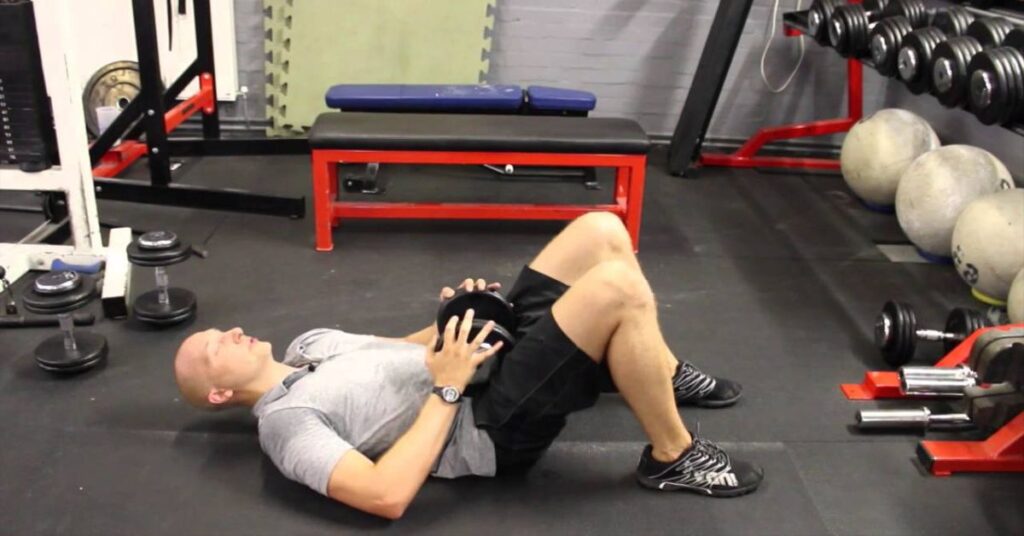
Do not perform these mistakes when doing dumbbell hip thrust.
Many athletes will not go full range to lift more weight. But, you won’t strain your glutes if don’t get all down. When you come back up make sure you control the weight till your heels are straight.
Failing To Place Your Feet Far Enough In The Direction Of
Putting your feet too in the direction of the floor is a common error among lifters who are just starting out. If it happens, you’re mostly focusing on your hamstrings and the glutes not being engaged at all.
Thus, you must maintain your feet in such a direction that, when you stretch, they should form an angle of 90 degrees.
Hyper-Extending The Lower Back Towards The The Top Of The Lift
After lifting the weight up, you must avoid exaggerating the lower back too much. This could lead to serious injuries, and may also result in less tension on your glutes.
Keep your chin curled to prevent hyper-extending. You should just extend your spine until it is level. There shouldn’t be any arches.
Utilizing Hip Thrust
This particular kind of bench permits users to hip thrust using a barbell, or band of resistance using a simple set-up.
If you begin adding an excessive amount of weight on your hips and you feel discomfort in the area where the bar sits. You might want to consider using specially-designed pads or rolling out an exercise mat, or even a towel to help cushion your hips and help prevent discomfort.
Dumbbell Hip Thrust: Variations
Bodyweight Hip Thrust
The hip thrust using body weight is an excellent alternative to dumbbell hip thrust, particularly if you’re a beginner. If you’re looking to work on your form, take a look!
Barbell Hip Thrust
Barbell hip thrusts are the following step to test once you’ve achieved using your own body weight for the hip thrust. If you’re seeking to get heavier and faster, this is the one perfect for you.
Single Leg Hip Thrust
Single leg hip thrust can be used to develop each leg differently. Following the same method similar to dumbbell hip thrust to take one of your legs off the ground, then do the same thing. For more advanced lifters, try using a dumbbell for additional tension.
Dumbbell Hip Thrust: Alternatives
If you’ve enjoyed the dumbbell hip thrust then check out these alternative exercises for glute and leg to boost your lower body strength and develop your glute muscles.
Glute Bridge
The good bridge is an arduous and fascinating exercise because it strengthens your glutes while simultaneously activating your quadriceps muscle. This type of thrusting lets you add more weight to your barbell.
Stiff Leg Deadlifts
The deadlift for the stiff leg is like it’s a Romanian deadlift. It is focused on muscles of the hamstring and hip flexion.
Cable Glute Kickbacks
Cable glute kickback can be a fantastic exercise for isolation since it targets solely your glutes. It can be done with cables or even your body weight.
How To Incorporate Dumbbell Hip Thrust Into Your Daily Routine?
Dumbbell hip thrusts are beneficial additions to a total-body workout or a leg-specific day of training.
If you’re using dumbbell hip thrusts along with leg workouts such as squats or deadlifts, make sure you’re giving yourself and your gams enough time between workouts.
Always ensure that you’re warming up properly before exercise. A moderate aerobic 5-10 minutes warm-up, followed by dynamic stretching, is a good idea.
How To Add Weight?
When your bodyweight thrust is effortless, add resistance using the following methods:
Dumbbell, Or Weighted Plate
Place the dumbbell or plate that is weighted in your hip bones as your movement.
Barbells
You can choose from a range of choices here.
When you’re using plates that are Olympic size on your barbell, it’s easy to place it on your feet.
If the barbell you are using is less, you can ask a friend to assist in transferring the bar to your hips. You could also lift the bar and then sit on a bench, and move to the starting position.
No matter how you approach the initial position the barbell needs to be placed at the hip crease with hands to each side to help stabilize it during the entire movement.
Dumbbell Hip Thrust Vs Dumbbell Glute Bridge: What’s The Differential?

Although both the dumbbell glute bridge and dumbbell hip thrust are geared towards glute activation, however, they differ from one another in several significant ways.
Posture: The primary distinction between a dumbbell hip thrust as well as a dumbbell glute bridge is the posture that your body is in. In the dumbbell glute bridge, the upper part of your body is resting on the floor while you contract your glute muscles and raise your waist up above you. Contrastingly, when you perform dumbbell hip thrust your shoulders are elevated.
Weight: The majority of dumbbell hip thrust use free weights whereas dumbbell glute bridges rely on the body’s weight. The extra weight that comes from dumbbells, a dumbbell or kettlebell will require greater activation of your lower body muscles while you lift your back from the floor.
Motion Range: The dumbbell hip thrust can provide an increased range of motion than the dumbbell glute bridge. Dumbbell hip thrust can be beneficial warming up exercises for other exercises that involve the hip hinging motion, for example, Romanian deadlifts and lunges.
Dumbbell Glute Bridges Vs Dumbbell Hip Thrust: Which Is More Effective?
If you are looking to increase strength and muscle mass, dumbbell hip thrust are the best choice.
If you’re looking to perform a more moderate exercise that focuses on only your glutes, then try dumbbell glute Bridges.
It is best to know them both, to include them in your training program exactly when and when they are required.
Is Dumbbell Hip Thrust Causing Your Thighs Larger?
Yes, it will make your thighs larger. To achieve this, you must build the growth of your muscles (hypertrophy).
Do 3 – 5 sets of between 8 and 12 reps. Rest periods are 30 to 45 seconds. You should be close to a complete failure in the last few reps in each set.
Last Words
If done correctly, dumbbell hip thrust can be one of the best methods to increase the size and muscle of the glutes. The best part is that they’re accessible to almost anyone.





